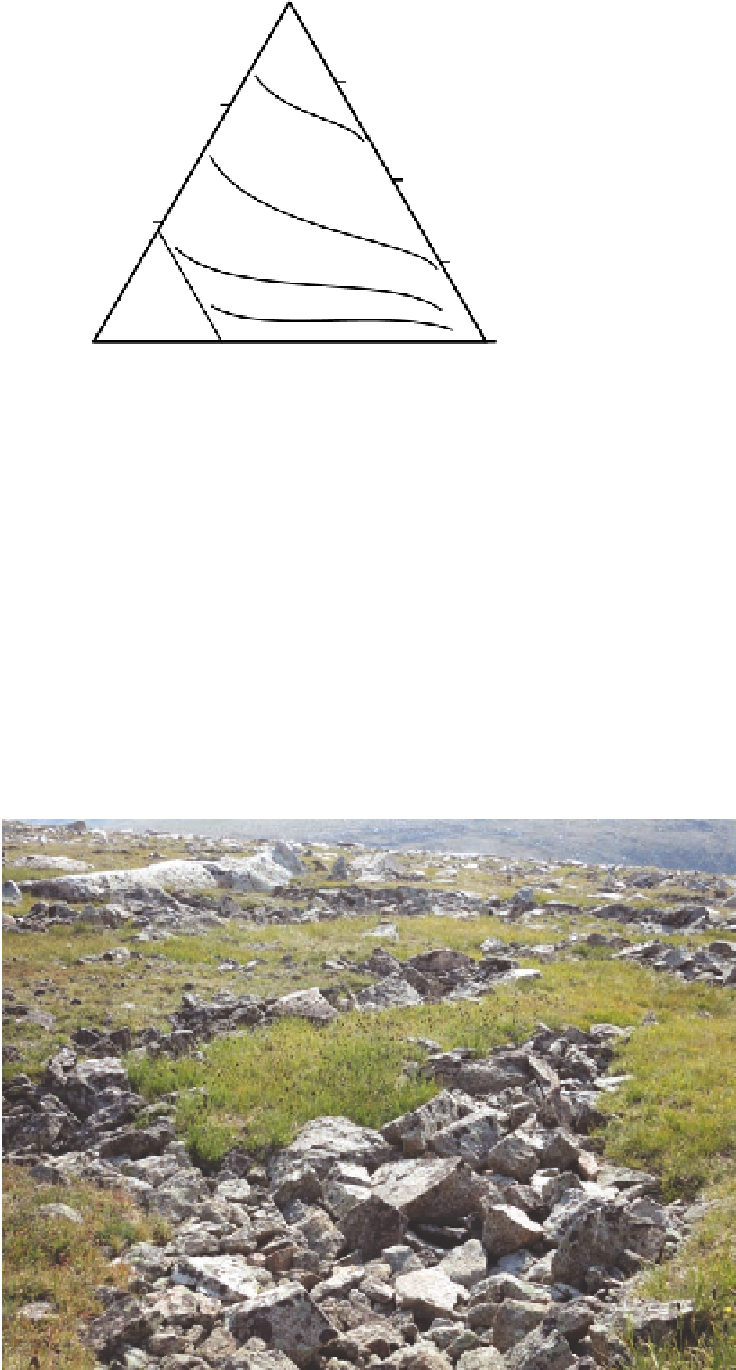Geoscience Reference
In-Depth Information
tion during the winter (fig. 14.8). the lee sides of ridges
or tree islands typically have drifted snowbanks that
persist until midsummer. Few if any plants can survive
where snow persists late into summer, but plants grow-
ing downslope from late-lying snow have a dependable
source of water for most of the growing season. con-
sequently, the vegetation there has higher cover and
growth. Moreover, the dominant plants of these mead-
ows are different (table 14.1).
Perhaps the most unique process that causes pat-
tern in the alpine landscape is
cryoturbation
—the freez-
ing and thawing of moist soils that occurs on time
scales of a single day or a year. Soil water expands as
it freezes, pushing comparatively large objects, such
as stones and boulders, along the path of least resis-
tance—usually toward the surface. After thousands of
freeze-thaw cycles, the larger objects are sorted from
smaller ones, creating
patterned ground,
such as frost
boils, stone nets, and stone polygons (fig. 14.9). on a
24-hour cycle, needle-ice forms and melts, which can
lead to the formation of frost boils on the soil surface
Another frost-related process is
solifluction,
in which
frost and gravity combine to move wet soil downslope.
Solifluction occurs most often on lee slopes, where
snow accumulates and the soil becomes wet, gradually
SNOW COVER
TOPOGRAPHIC
POSITION
Summit
or
ridge
Snow-
free
Fellfield
Upper
slope
Winter snow
cover
Turf
Lower
slope
Tufted
hairgrass meadow
Snow
accumulation
Ravine
Sedge meadow
Willow or fen
Persistent
snow
Leeward
Windward
WIND EXPOSURE
Fig. 14.8. Distribution of different kinds of alpine vegetation
in relation to topographic position, wind exposure, and snow
cover. Adapted from Johnson and Billings (1962).
that allow some plants to grow where they might not
otherwise.
At an intermediate scale, differences are caused by
topography and the presence or absence of tree islands,
as discussed previously. on windswept ridges or flats
are fellfields, dominated by cushion plants and other
drought-tolerant plants that require little snow protec-
Fig. 14.9. Alternating freezing and
thawing over long periods causes large
stones and rocks to be separated from
fine-textured soil particles, forming
stone polygons or nets, such as in this
area in the Beartooth Mountains. the
alpine turf is dominated by various
alpine sedges along with alpine avens,
alpine bistort, alpine sagewort, snow
willow, tufted phlox, and other species.
elevation 10,400 feet.

Search WWH ::

Custom Search